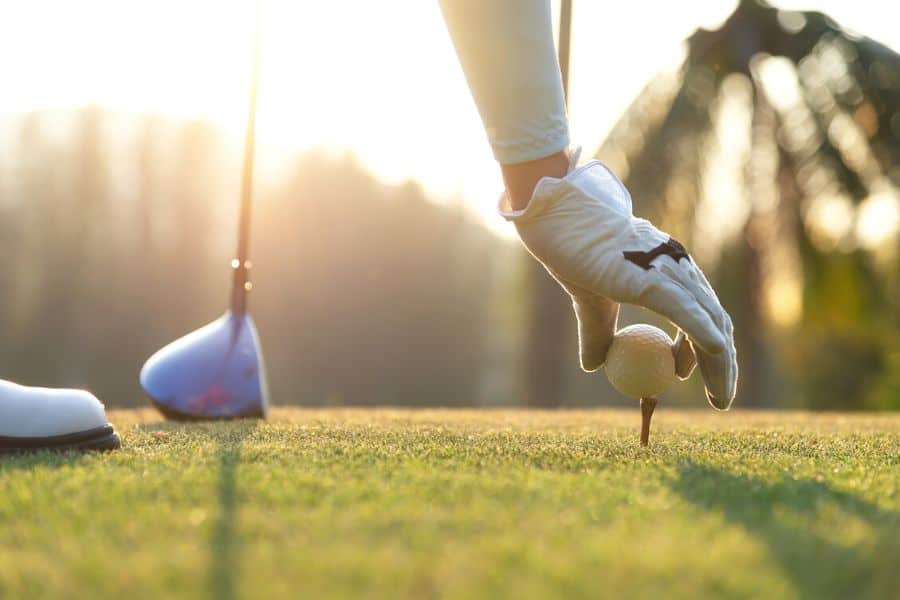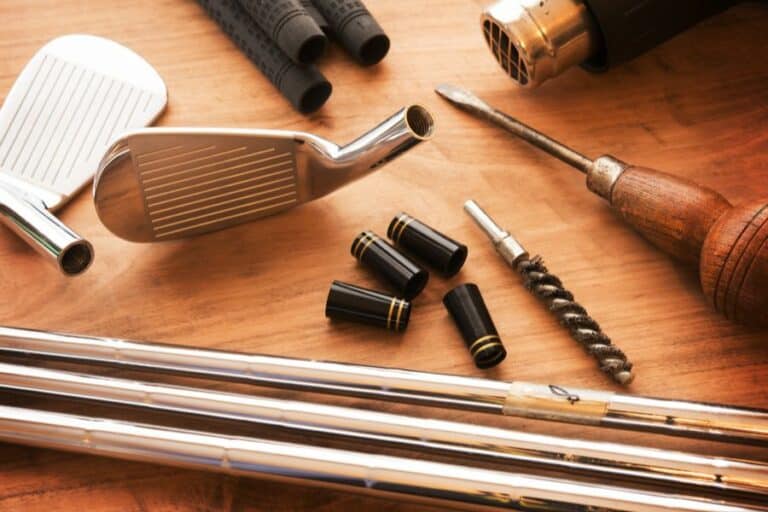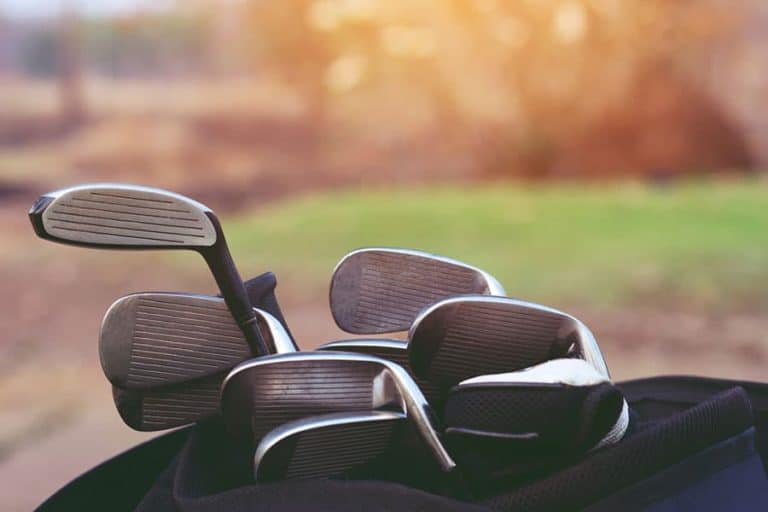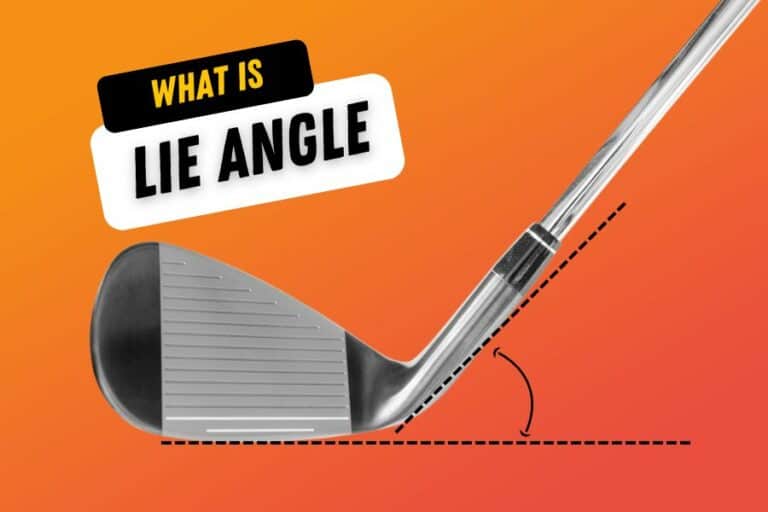What Is A Mulligan In Golf: Definition, History, And Purpose

Mulligans provide golfers with a chance to correct mistakes and try again. Whether you slice your drive into the rough or top your approach shot, you can call for a mulligan and start fresh.
A mulligan is an exciting opportunity to hit the reset button in golf. With no penalty inflicted for doing so, you can replay your shot as if it had never even taken place before.
Here we decipher what a mulligan is, where it originated, and how it benefits golfers.
What is a mulligan?
A mulligan is a golf term to describe a second chance to play a stroke.
Mulligans are typically allowed only on the first shot of the game and only for the player who hit the shot.
Some players may also allow their opponents to take a mulligan, but this is not standard practice. This is not an official rule in the game of golf, but it is commonly used as a casual, friendly way to allow players to redo a shot they are not satisfied with.
In general, a mulligan alleviates pressure or frustration when starting a round of golf. It allows players to hit a second shot without the consequences of their first tee shot and can help to set a more relaxed and enjoyable tone for the round.
Whether you are a seasoned pro or a beginner, taking a mulligan can be a helpful way to start your round off on the right foot.
The origin of Mulligan in golf
It is unknown where the word “mulligan” originally derived from, but The United States Golf Association (USGA) believes it was named after a Canadian golfer in the 1920s: David B. Mulligan (1869-1954).
He played out of the Country Club of Montreal and has been credited with inventing this practice. Although the source of the term remains a mystery, three potential explanations for David Bernard Mulligan’s story have been mentioned below.
Explanation 1 – After a poor tee shot, David Bernard Mulligan decided to replay it and called it a “correction shot.” His playing mates determined that this practice should be named after him in honor of his idea. When he relocated from Canada to the U.S., Mulligan introduced the concept at Winged Foot, where players have been using ‘The Mulligan’ ever since!
Explanation 2 – Mulligan was given an additional chance to redeem himself after a taxing drive over Victoria Bridge, as his nerves had left him feeling jittery and apprehensive.
Explanation 3 – Mulligan was given an additional tee shot after being late to the course and hurrying to ready himself for his tee time.
Another Theory
In the 1930s, John A. “Buddy” Mulligan was a locker room attendant at Essex Fells Country Club in New Jersey. He often played 18 holes with Dave O’Connell and Des Sullivan after completing his duties of cleaning up the locker room.
With no other members present, they would relish their time together on the course. This fun tradition was an alternative version that eventually became what we now know as mulligan in the game of golf!
After hitting a dud of an initial tee shot, he pleaded with O’Connell and Sullivan to permit him to redo the previous stroke since they had spent all morning rehearsing while he was occupied with work. After hearing this story, other participants soon began giving themselves “Mulligans” as a tribute to him.
The purpose of a Mulligan in the golf course
A mulligan in golf gives you the opportunity to have a fresh start, reduce anxiety and stress, protect your mental health, and improve your self-esteem.
But be aware if you’re playing with an opponent who’s feeling especially competitive over that time, they can request a “Gilligan” that is forcing you to replay one of their successful shots!
There are countless compelling reasons to request a Mulligan, such as:
- A catastrophic tee shot
- If there is a lost ball
- Golf ball came to rest in the bunkers.
- If the ball moves into woods or rough patches
- Or, perhaps it was simply an unlucky shot.
Mulligan Alternatives
If every player in your group has agreed that taking a mulligan is permissible, be sure to clarify which mulligan alternatives will be used throughout the round.
- The must mulligan – No matter the outcome of your do-over, you must always play the ball as it lies, even if it is in a less-than-ideal spot. The second shot will have to be taken with this in mind.
- The provisional mulligan – With this, you can choose whether to take the original shot or opt for a mulligan. It’s similar to playing with a provisional ball, except there won’t be any penalty if you decide on the mulligan option.
Number of Mulligans
Mulligans can only be permitted on first tee shots. With everyone’s consent, players may use variously named mulligans until they reach a playable shot (i.e., The Finnegan, Branagan, Flanagan, or Craig).
In addition to this, agreement among group members during tournaments for charity money-raising purposes specifically allows the purchase of mulligans at the event start. However, these are limited to what has been bought beforehand.
Scoring a Mulligan in golf
Mulligans are not recognized in the official golf rule book, they are sometimes given as a friendly gesture between golf buddies.
The act of taking a Mulligan allows a player to replay their opening tee shot without adding any score to the scorecards. However, players can choose to record the score if they wish to do so, and it is entirely up to the discretion of the player and their playing partners.
Mulligan vs handicap in golf
In a game of golf, a Mulligan is an opportunity for a player to redo a shot if their first one wasn’t satisfactory. This is only allowed in casual and friendly rounds of golf and doesn’t come with any penalties. On the other hand, a handicap is a different concept altogether. It’s an official calculation of a golfer’s best ten scores out of their last twenty rounds played. The lower the handicap, the better the golfer’s current performance.
Unlike Mulligans, handicaps are used in official games and are an important factor in determining a player’s overall performance.
Stigma around Mulligan
The mulligan is not a customary practice that many golfers abide by, and some may be greatly irritated if you merely mention the term in passing.
According to Jon Tattersall, a GOLF Top 100 instructor based in Atlanta, taking more than one mulligan is simply “taking the piss.”
He went on to suggest that golfers should attempt just one shot off of the first tee as it helps assess their technique under pressure and gives an accurate representation of how they are performing.
Stress is really what separates good shots from great ones because anyone can hit a decent ball if there’s nothing at stake!
Veteran Tour professional Brian Henninger adamantly believes that every stroke taken should be counted when playing a round of golf.
However, there are some exceptions to this rule, such as alternative formats agreed upon at the start of gameplay.
Henninger nevertheless, remains firm in his belief because nothing is worse than being paired with players, who do not follow the rules and integrity that come with scorekeeping.
What is the right and wrong time to ask for a mulligan?
When a golfer drives their first tee shot out of bounds, that’s an ideal opportunity to take advantage of a mulligan.
A little leniency can certainly enhance the experience for some golfers, yet, too many mulligans could diminish the excitement and competitiveness between players.
Moreover, you don’t have to call for a mulligan if your performance is better than the other players in your group and you are hitting fairways consistently while also reaching greens on regulation.
Avoid using a mulligan when your pace of play is suffering or the golfer behind you is playing faster.
Never assume it’s okay to ask for a mulligan when on the green.
Conclusion
Although the official rules of golf expressly forbid mulligans, playing a friendly round with pals calls for some leniency.
Set clear guidelines between your group to ensure everyone is having fun and enjoying their golf experience – even if that means using those extra shots!
Alternatively, practice harder at home or on the range so you rarely ever need one in-game.
Mulligans can be invaluable for maintaining mental composure, particularly for novices still getting used to being out on the course. This allows every golfer – regardless of ability – an enjoyable game!
FAQs
What is a Gilligan in golf?
In golf, a Gilligan is a term used to describe when your playing partners ask you to replay a shot that was particularly good. It is the opposite of a Mulligan, where you would replay a poor shot. So essentially, a Gilligan is a compliment on your shot and a request to see it again.
What about charity events?
Mulligans can be used to raise money for charity events and other fundraisers. Clubs can sell Mulligans for a fee, and the proceeds are donated to the cause. The number of Mulligans you can buy for your money may vary based on the clubhouse rules. This can add an extra layer of excitement to the event while also raising money for a good cause.
Do professional golfers use Mulligans?
According to the Rules of Golf, which govern all professional golf tournaments, professional golfers are not allowed to use Mulligans during competition rounds.








